This document discusses implementing merge sort. It begins with an introduction to merge sort and the divide and conquer approach. It then reviews two relevant literature sources, one on applying formal model merging to class diagram integration and resolving conflicts, and another on a heuristic and pattern-based approach to merge sort to reduce computational complexity. The document also presents an illustration of how merge sort works and discusses resolving inconsistencies that can arise when combining partial models from different use cases.
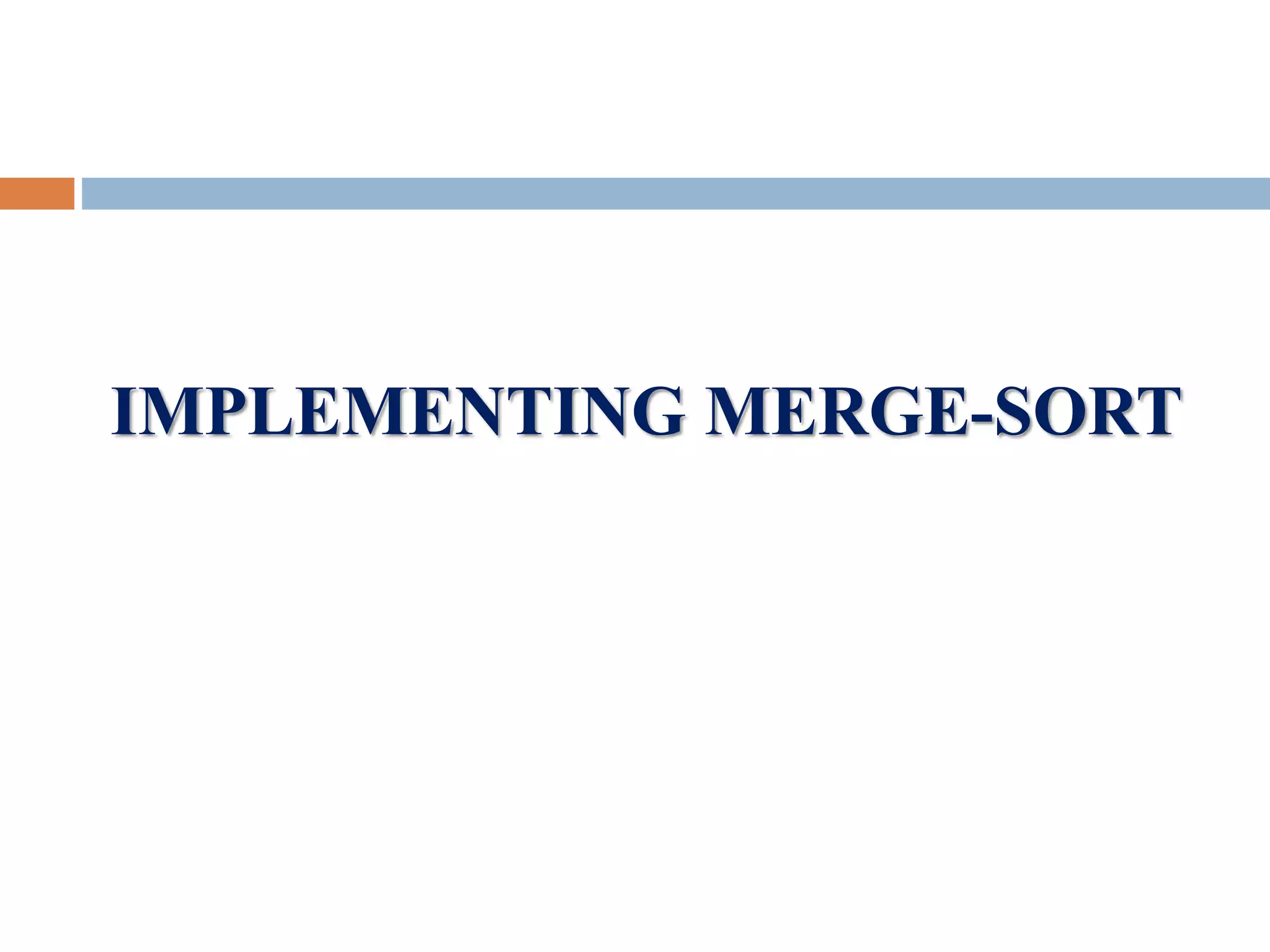
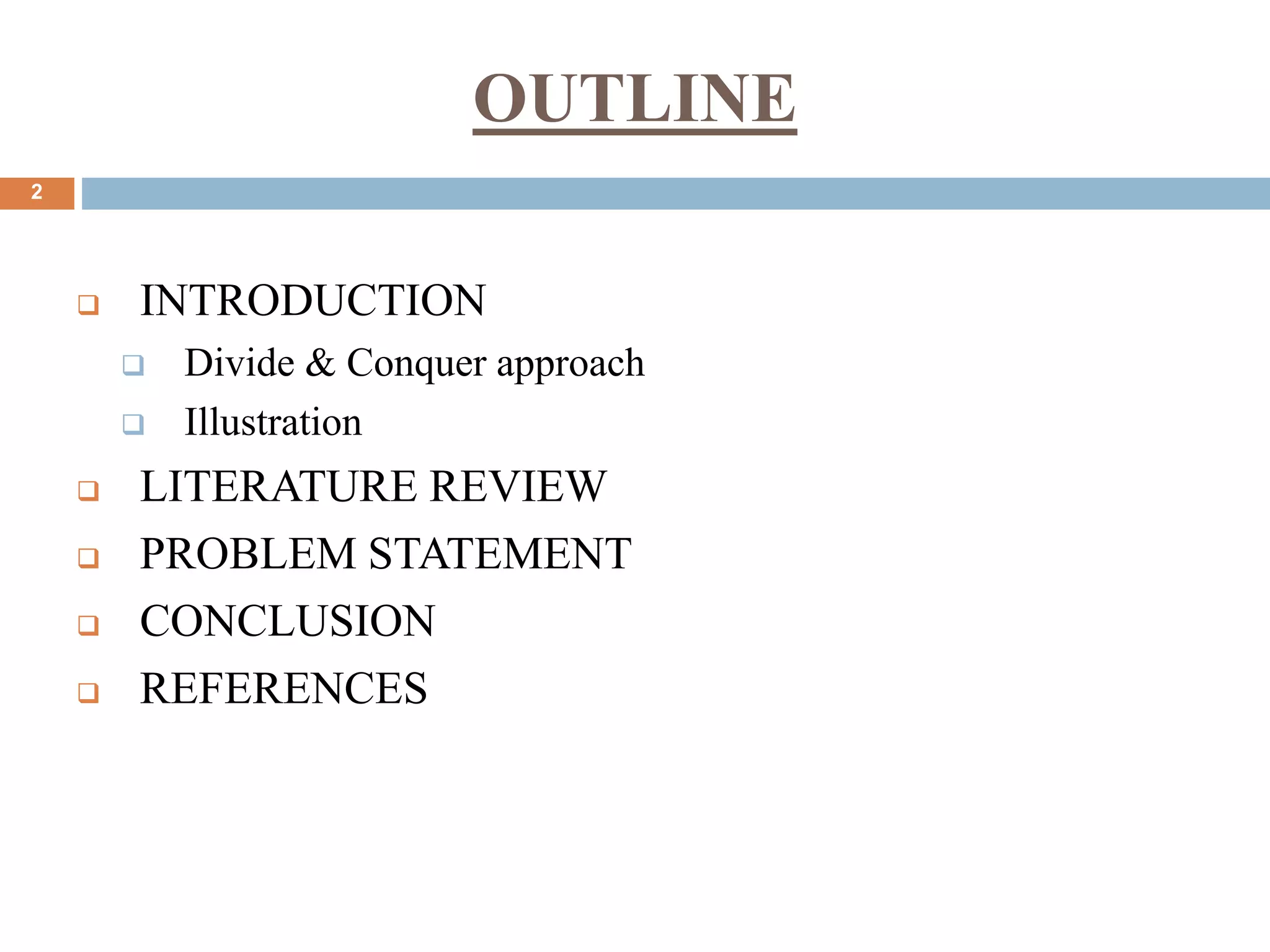
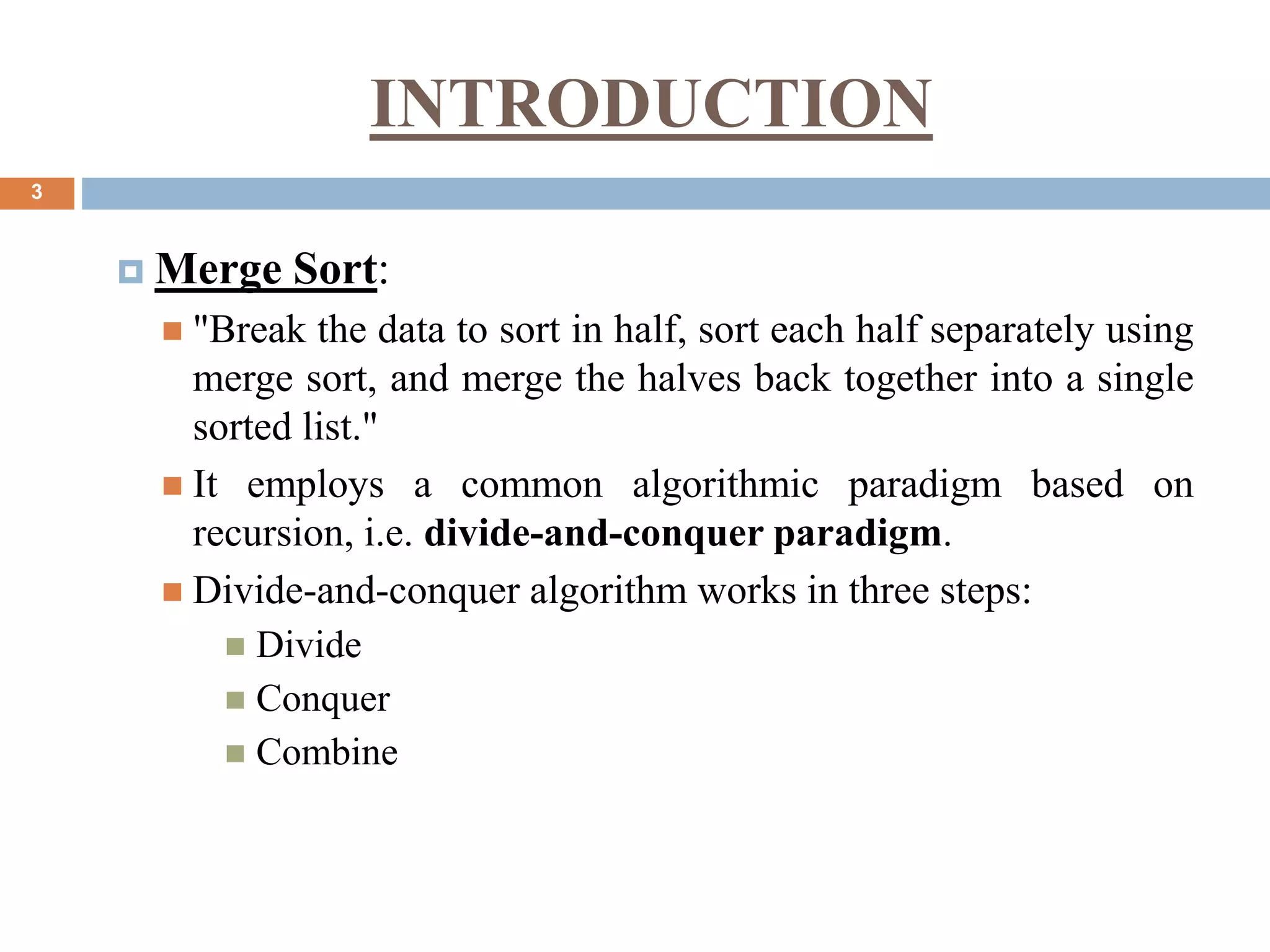
![DIVIDE & CONQUER APPROACH
4
Fig. 1: Divide & Conquer view of one
step[3]
Here's how to view one step, assuming that each divide step
creates two subproblems:](https://image.slidesharecdn.com/implementingmergesort-160803160953/75/Implementing-Merge-Sort-4-2048.jpg)
![ILLUSTRATION
5
Here is a diagrammatic example for how merge sort works:
Fig. 2: Merge Sort Working[5]](https://image.slidesharecdn.com/implementingmergesort-160803160953/75/Implementing-Merge-Sort-5-2048.jpg)

![LITERATURE-REVIEW(1/2)
7
Title: ” Formal Model Merging Applied to Class
Diagram Integration”[1]
Authors: Artur Boronat, Jose A. C., Isidro Ramos, Patrico Letelier
Objective: The definition of Merge operator is applied on class
diagrams integration to present an automated approach for
generic model merging providing support for conflict
resolution and traceability between software artifacts.
Keywords: Model-Driven Engineering, Model Management, model
merging, conflict resolution.](https://image.slidesharecdn.com/implementingmergesort-160803160953/75/Implementing-Merge-Sort-7-2048.jpg)
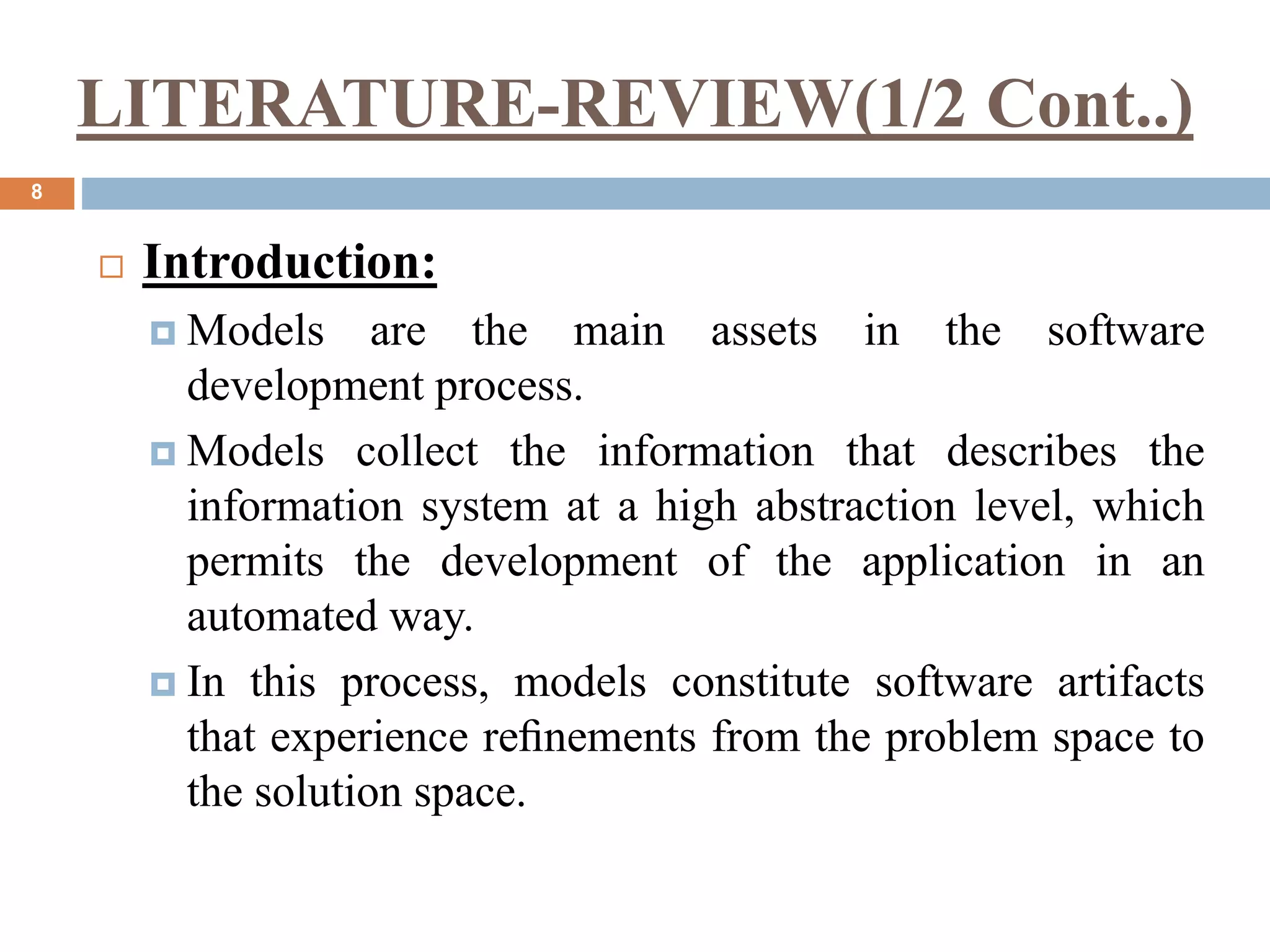
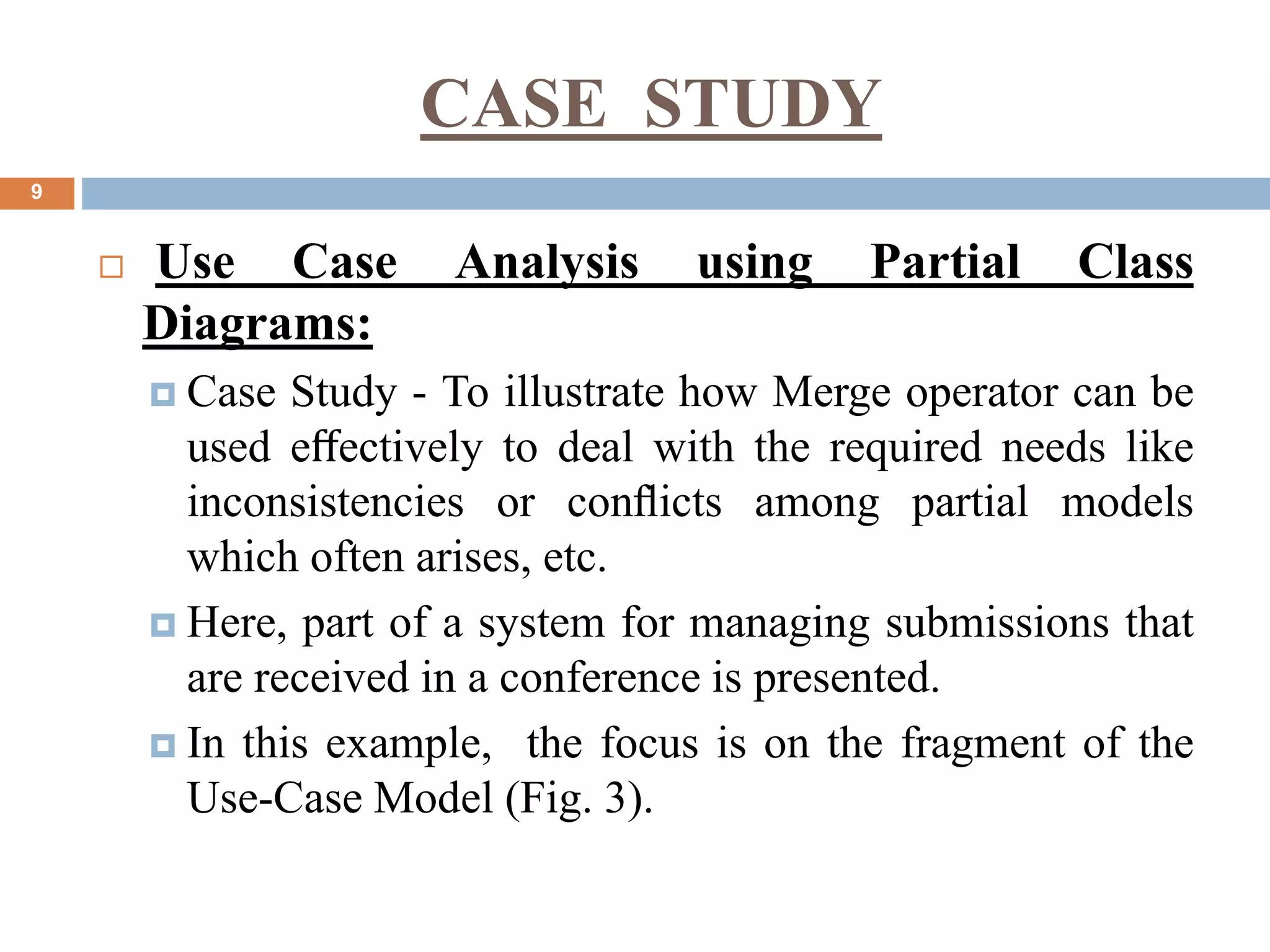
![USE CASE MODEL
10
Software development methodologies based on UML propose an approach where
the process is Use Case Driven, which means that all artifacts have traceability
links from Use Cases (The artifacts are refined through several transformation
steps).
The Use Case Model must sacrifice precision to facilitate readability and
validation. So, the analysis of use cases is mainly a manual activity.
Fig. 3: Use Case Model[1]](https://image.slidesharecdn.com/implementingmergesort-160803160953/75/Implementing-Merge-Sort-10-2048.jpg)
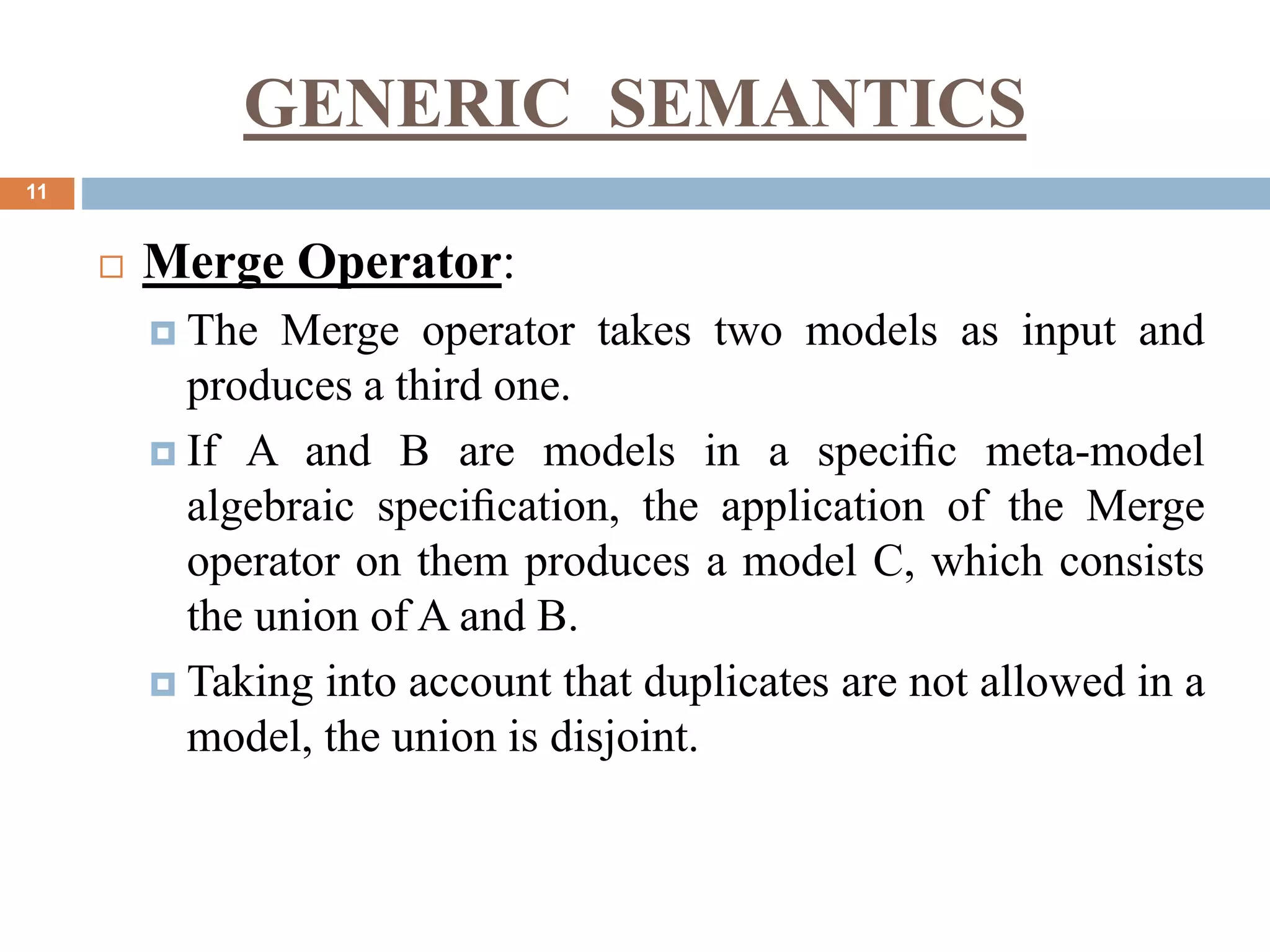
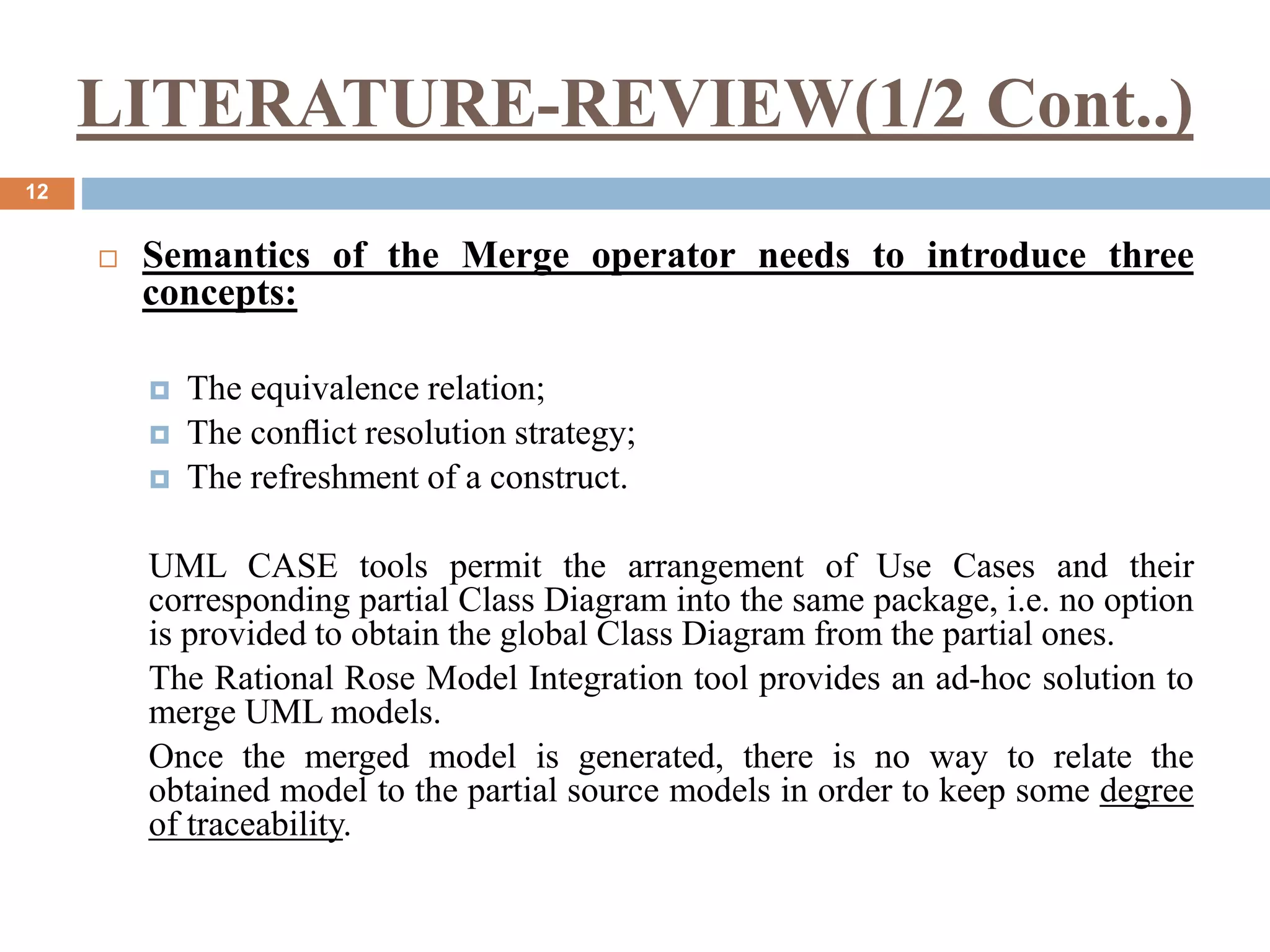
![LITERATURE-REVIEW(2/2)
13
Title: “Heuristic and pattern based Merge Sort”[2]
Author: Manouchehr Zadahmaf jafarlou, Parisa Yousefzadeh fard
Objective: The aim of this study is to present a stable and
adaptable Merge Sort algorithm that uses the design
patterns to reduce computational complexity of swaps and
memory usage.
Keywords: Merge sort, Design patterns, computational complexity.](https://image.slidesharecdn.com/implementingmergesort-160803160953/75/Implementing-Merge-Sort-13-2048.jpg)
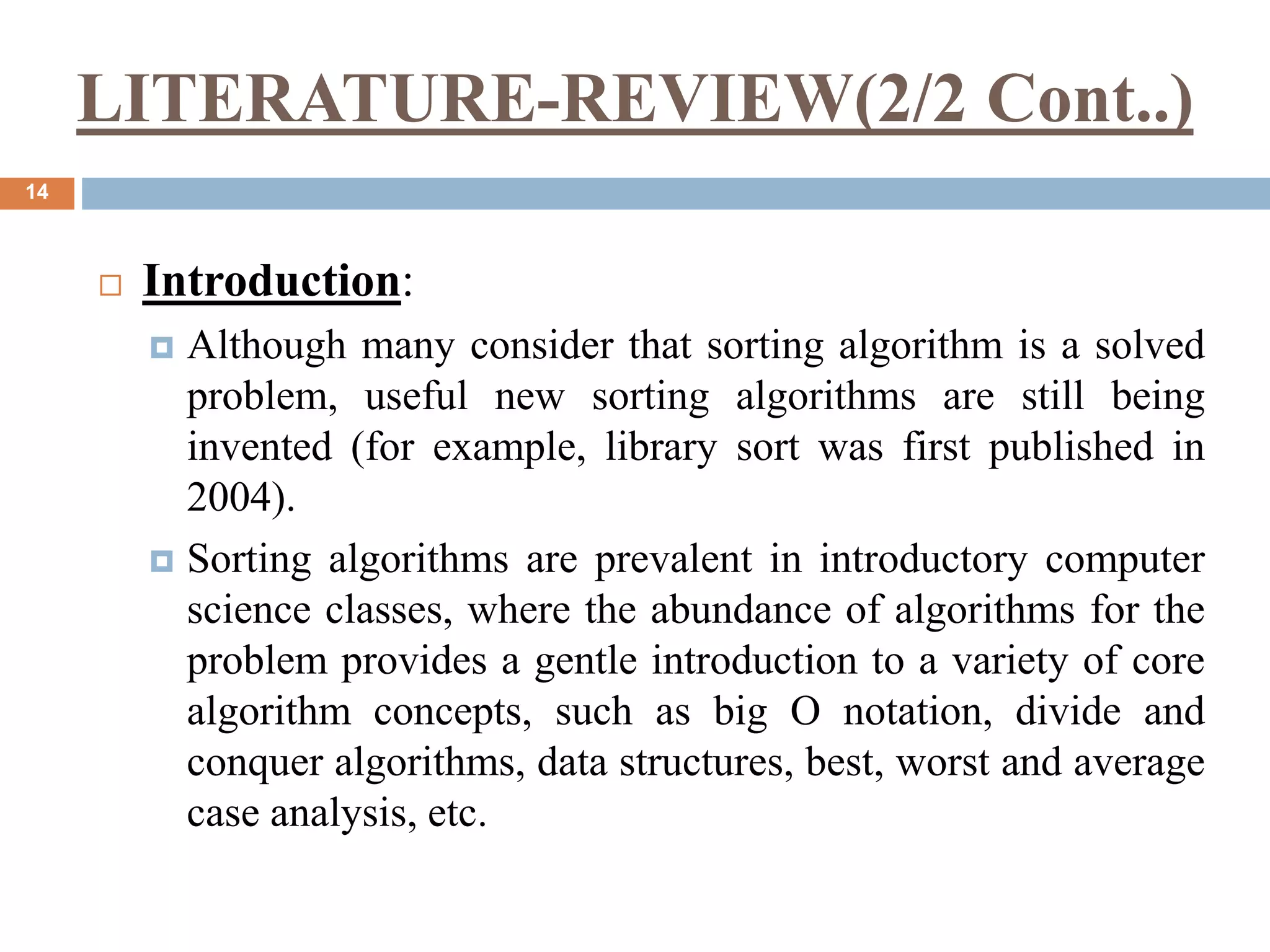
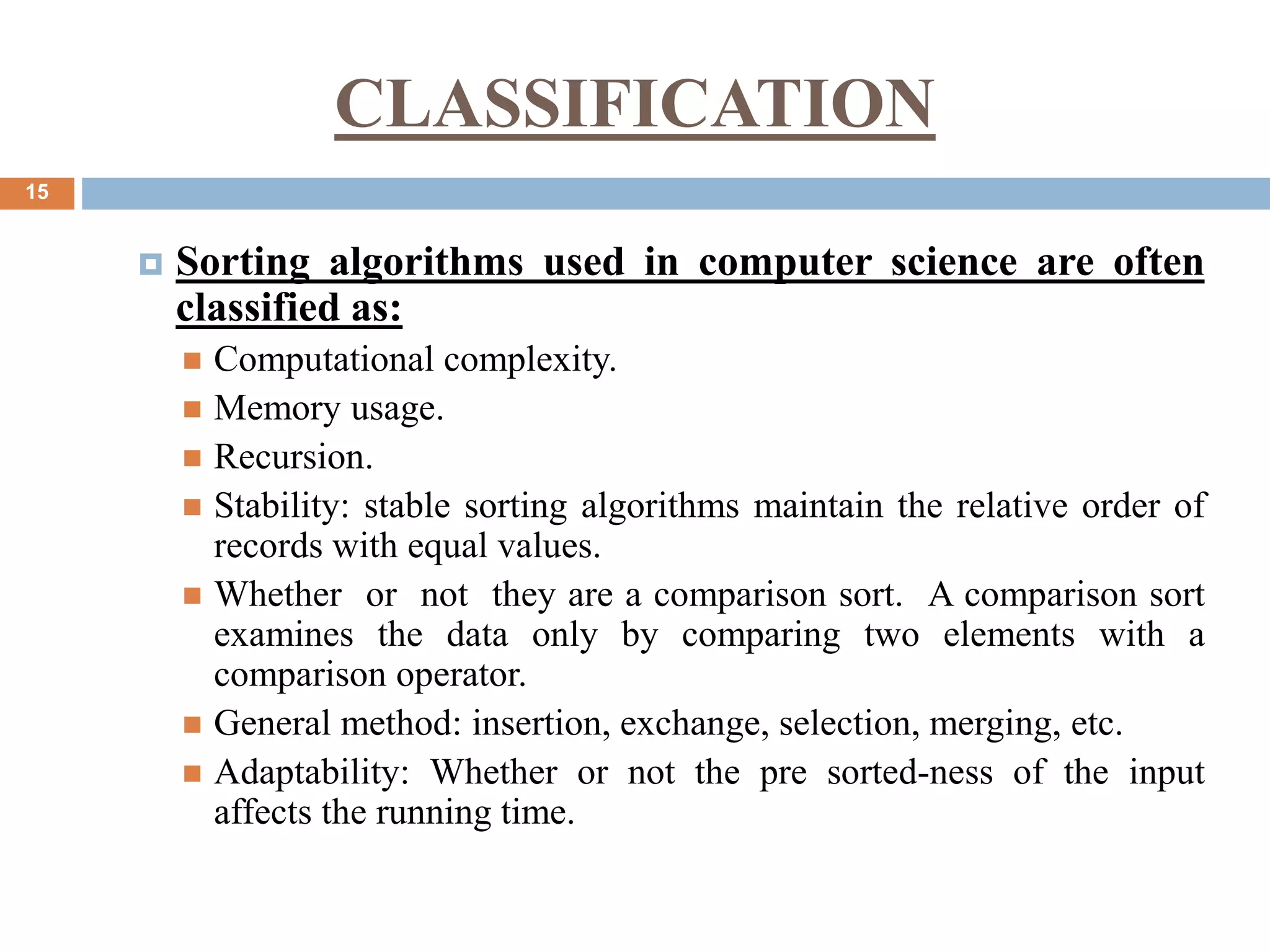
![LITERATURE-REVIEW(2/2 Cont..)
16
Heuristic and pattern based Merge Sort implementation:
Fig. 4. Heuristic and pattern based Merge Sort implementation[2]](https://image.slidesharecdn.com/implementingmergesort-160803160953/75/Implementing-Merge-Sort-16-2048.jpg)
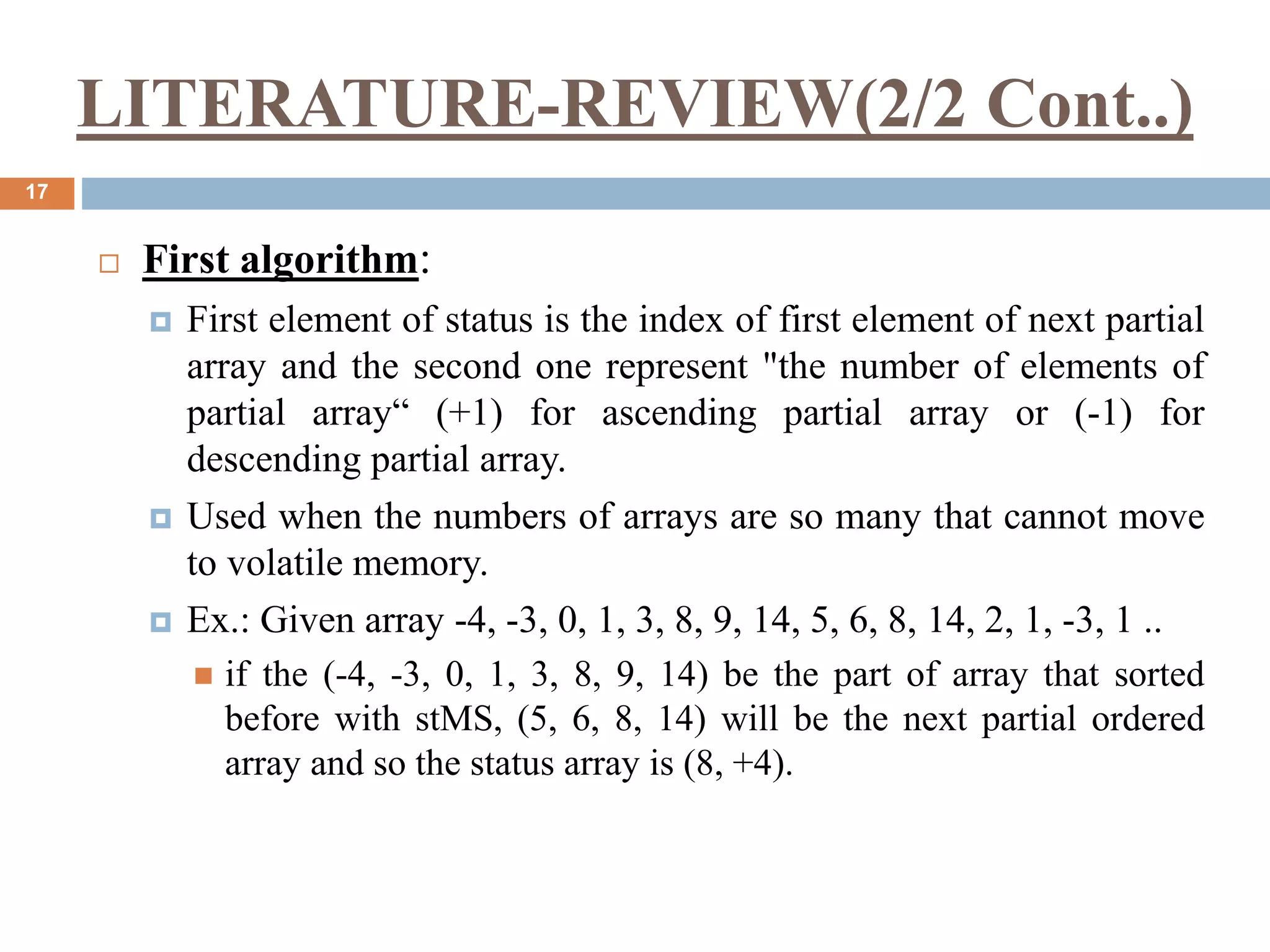
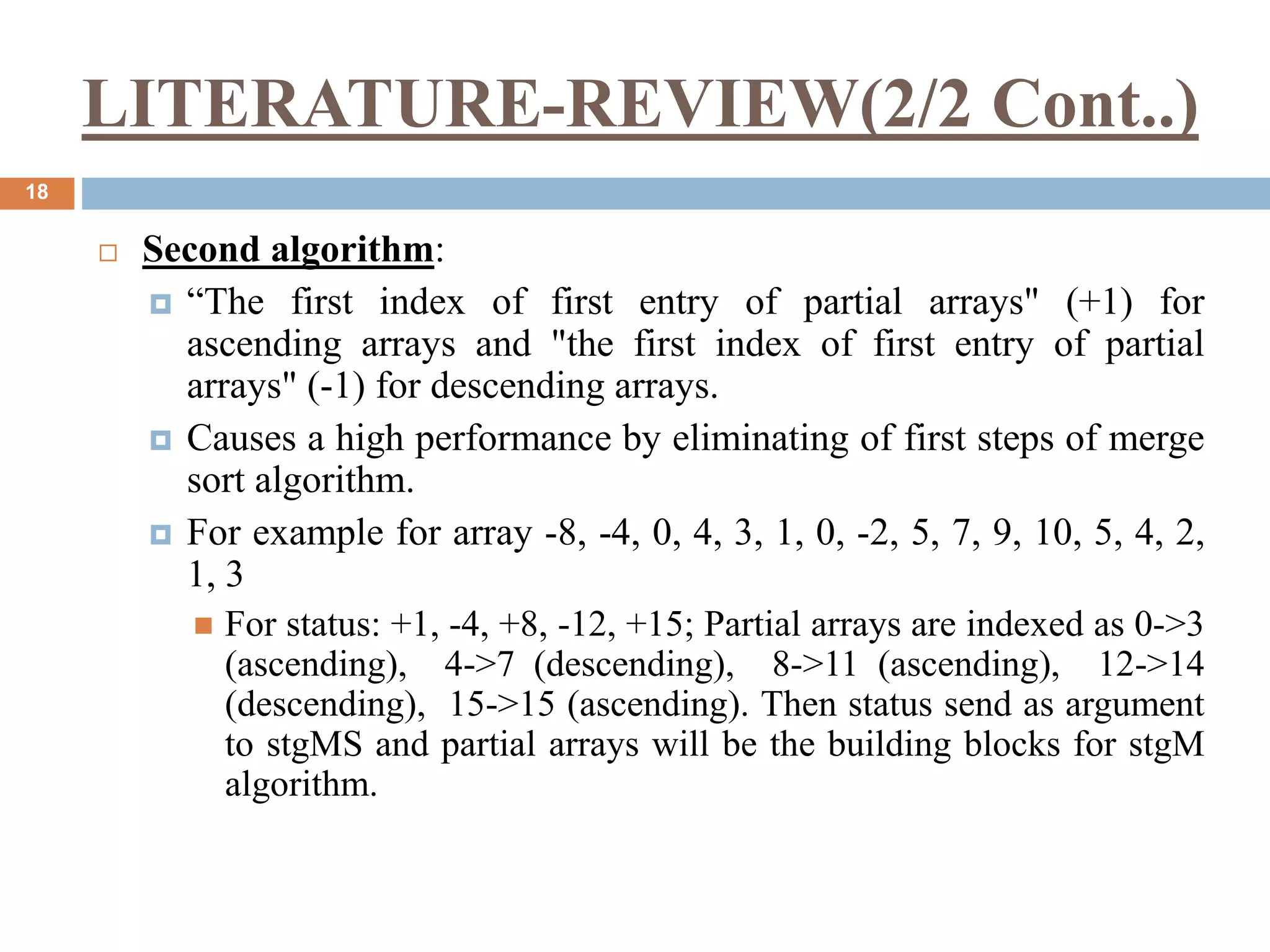
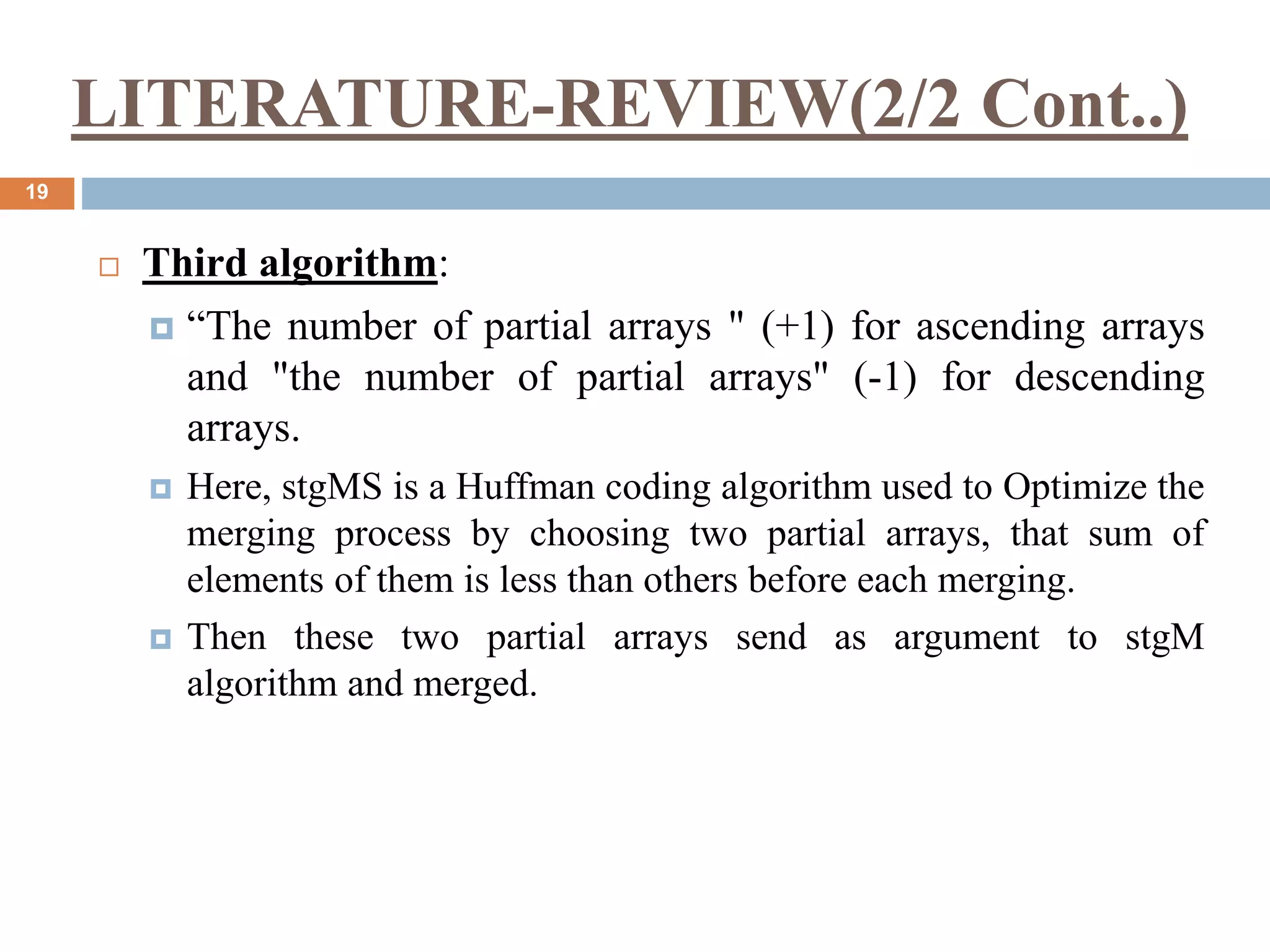
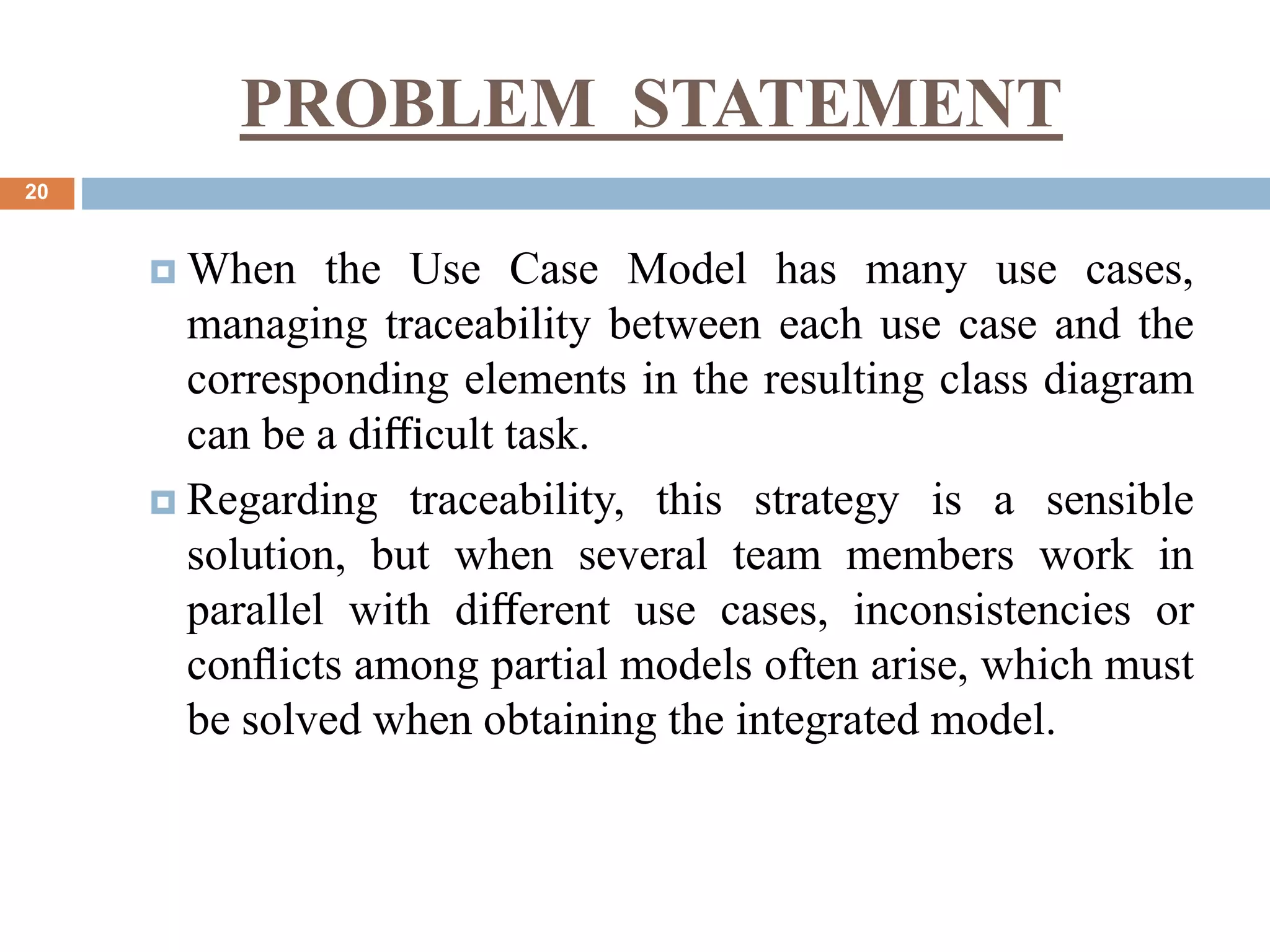
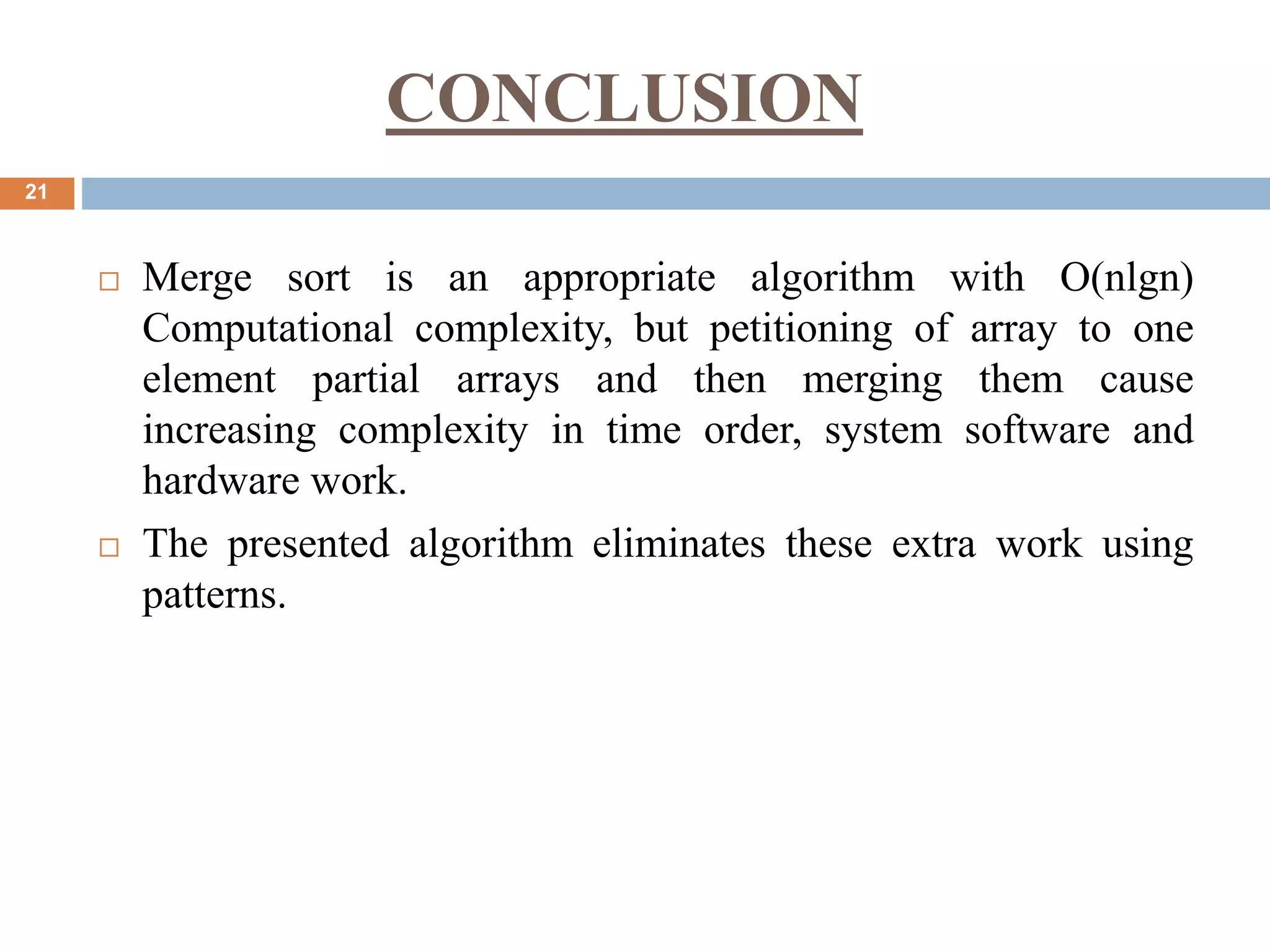
![REFERENCES
22
1. Artur Boronat, Jose A. C., Isidro Ramos, Patrico Letelier,” Formal Model Merging
Applied to Class Diagram Integration”, © 2006-Elsevier.
2. Manouchehr Zadahmaf jafarlou, Parisa Yousefzadeh fard,” Heuristic and pattern
based Merge Sort”, © 2010-Elsevier.
3. https://www.khanacademy.org/computing/computer-science/algorithms/merge-
sort/a/divide-and-conquer-algorithms [09/12/2015, 22:33]
4. http://computationaltales.blogspot.in/2011/10/merge-sort-and-lines-of-
kindergarteners.html [09/12/2015, 22:13]
5. http://coding-geek.com/how-databases-work/ [09/12/2015, 22:28]](https://image.slidesharecdn.com/implementingmergesort-160803160953/75/Implementing-Merge-Sort-22-2048.jpg)